
All categories
Featured selections
Trade Assurance
Buyer Central
Help Center
Get the app
Become a supplier

(49781 products available)





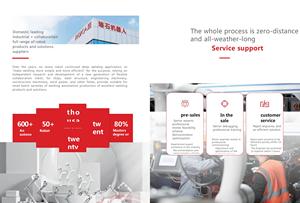








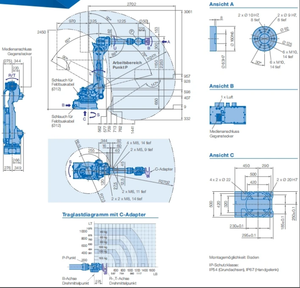
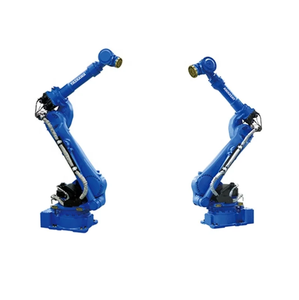
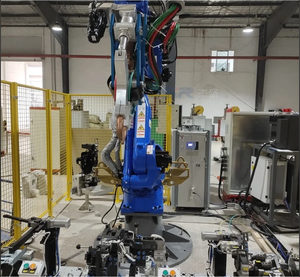













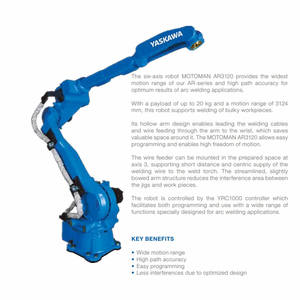




welding robot are indispensable tools in the realm of metal fabrication, offering versatility and efficiency in joining metal components. These specialized instruments cater to a range of welding processes, each designed to meet specific industrial needs. Whether you're involved in automotive manufacturing, construction, or shipbuilding, welding robot play a crucial role in ensuring the integrity and strength of metal structures. With advancements in technology, these tools have evolved to offer enhanced precision, safety, and ease of use, making them a vital asset for professionals in the welding industry.
The diversity of welding robot available in the market reflects the varied demands of different welding applications. Common types include arc welding equipment, resistance welding equipment, and gas welding equipment. Arc welding equipment is widely used for its ability to handle heavy-duty tasks and is popular in industries like construction and shipbuilding. Resistance welding equipment is known for its efficiency in joining thin metal sheets, making it ideal for automotive applications. Gas welding equipment, on the other hand, is favored for its portability and is often used in fieldwork situations. Each type of welding robot is engineered to deliver optimal performance, ensuring reliable and durable welds for a variety of projects.
welding robot are designed to provide a range of functionalities that enhance the welding process. These tools offer precise control over heat and pressure, ensuring the creation of strong and uniform welds. Features such as adjustable settings for voltage and current, ergonomic designs, and advanced cooling systems contribute to their efficiency and safety. Adjustable settings allow users to tailor the welding process to specific materials and thicknesses, while ergonomic designs reduce fatigue during prolonged use. Advanced cooling systems help prevent overheating, ensuring continuous operation without interruptions. The integration of digital interfaces in modern welding robot allows for easy monitoring and adjustments, further enhancing user experience and welding quality.
The construction of welding robot involves the use of robust materials and components to withstand the high temperatures and pressures encountered during welding. Typically, these tools are made from high-grade metals such as stainless steel and aluminum, known for their durability and resistance to corrosion. Components like electrodes, nozzles, and hoses are crafted from materials that offer excellent conductivity and heat resistance. The choice of materials impacts the tool's performance, longevity, and safety, allowing manufacturers to develop welding robot that meet stringent industry standards. As sustainability becomes increasingly important, manufacturers are exploring eco-friendly materials and processes to minimize environmental impact.
Maximizing the benefits of welding robot involves understanding their operational capabilities and ensuring proper maintenance. Before starting a welding task, it's essential to select the appropriate equipment based on the material type and thickness. Ensure that the settings are adjusted correctly to prevent defects in the welds. Regular maintenance, including cleaning and inspection of components, is crucial to extend the lifespan of the equipment and ensure optimal performance. Safety measures, such as wearing protective gear and ensuring proper ventilation, are vital to prevent accidents and health hazards. By following these guidelines, users can harness the full potential of welding robot, achieving high-quality welds while maintaining safety and efficiency.
When deciding on the most suitable welding robot for your welding needs, several factors must be considered. The type of welding process you intend to perform is crucial; different equipment is tailored for specific welding techniques such as MIG, TIG, or stick welding. Additionally, the material you are working with and its thickness will influence your choice. It's important to select equipment that offers the appropriate power output and features for the task at hand. Durability and ease of maintenance should also be considered to ensure long-term usage without frequent breakdowns.
The advancements in technology have significantly impacted the design and functionality of welding robot. Modern equipment is often equipped with digital controls, allowing for precise adjustments and monitoring during the welding process. Features such as automatic voltage compensation and pulse control enhance the accuracy and quality of welds. The integration of software-driven interfaces facilitates easier setup and operation, reducing the learning curve for operators. Additionally, innovations in cooling systems and protective mechanisms have improved safety and reliability, making these tools more user-friendly and efficient.
As sustainability becomes a priority, manufacturers are focusing on reducing the environmental impact of welding robot. This includes developing energy-efficient models that consume less power while maintaining high performance. The use of eco-friendly materials in the construction of equipment is also gaining traction, with an emphasis on recyclability and reduced emissions. Understanding the environmental footprint of the welding equipment you choose can contribute to greener practices within your industry. Opting for tools that align with sustainable standards not only benefits the environment but can also enhance your company's reputation.
Safety is paramount when using welding robot. Key safety features include automatic shut-off mechanisms to prevent overheating, robust shielding to protect against sparks, and ergonomic designs to minimize strain during use. It's also essential to ensure proper ventilation to reduce exposure to harmful fumes. Utilizing equipment with advanced safety certifications can provide additional peace of mind.
Digital technology enhances welding robot by providing precise control over welding parameters such as voltage and amperage. This technology allows for real-time monitoring and adjustments, leading to more consistent and high-quality welds. The integration of software interfaces simplifies the setup process and enables easy troubleshooting, making the equipment more accessible to users.
Yes, welding robot can be versatile enough to handle various materials, including steel, aluminum, and copper. However, it's crucial to select equipment that offers adjustable settings to accommodate different material properties and thicknesses. The choice of electrodes and filler materials is also important in achieving optimal results for specific applications.
Regular maintenance of welding robot is essential for ensuring optimal performance and longevity. This includes cleaning and inspecting components such as electrodes and cables, checking for wear and tear, and replacing parts as needed. Proper storage and handling can prevent damage and extend the lifespan of the equipment.
Eco-friendly welding robot options are increasingly available, focusing on energy efficiency and sustainable materials. These tools are designed to minimize environmental impact through reduced power consumption and emissions. Manufacturers are also exploring recyclable materials and processes to enhance the sustainability of their products.